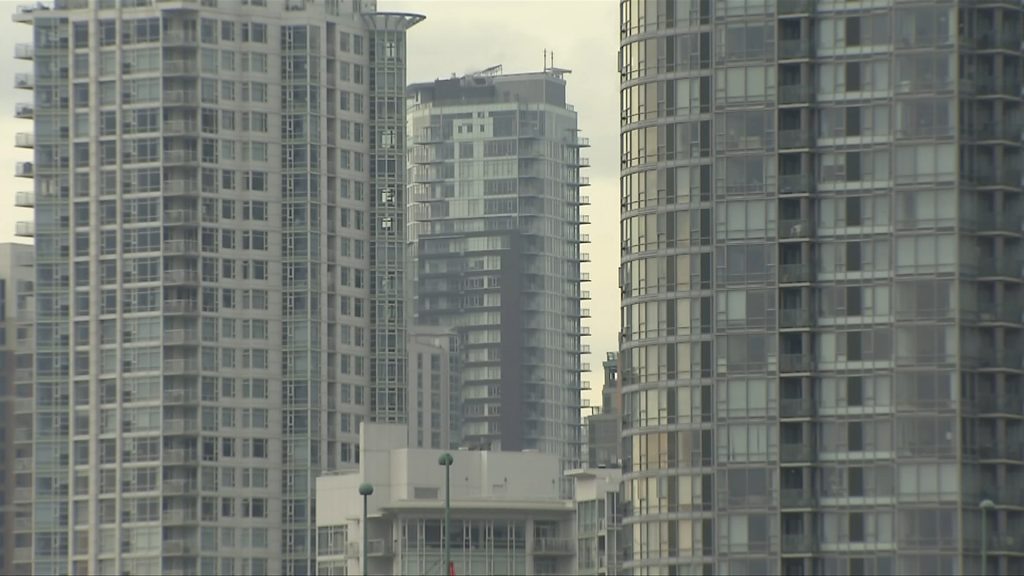Historic zoning changes could transform B.C.’s housing landscape

Posted February 6, 2024 8:22 pm.
Last Updated February 7, 2024 11:50 am.
You may see more people in your neighbourhood in the near future, with historic zoning changes poised to take effect this summer across B.C., ushering in a new era of housing opportunities.
The legislative amendments, scheduled for implementation on June 30, aim to address housing challenges and create diverse options for both prospective and existing homeowners.
One expert and local developer believes these news changes, which will allow the vast majority of property owners to increase housing density on their land, will achieve exactly what the province set out to do in the first place: create more options faster for those looking to get into the housing market and for those already in it.
“It’s going to allow for young families to have access to homes with a backyard, a third bedroom — that currently is limited to two-bedroom condos — or upgrade to a single-family house. This will provide a significant opportunity for residents in our community,” Bill Laidler with Laidler Development told CityNews.
“This is the boldest regulatory change we’ve seen in real estate.”
The anticipated impact extends beyond increased housing options, with Laidler predicting a potential boost in the value of single-family homes, particularly older ones on larger lots, due to the newfound development potential.
Drawing parallels from a UBC study on Auckland, New Zealand, where similar changes were implemented in 2016, Laidler speculates that the influx of new housing options could lead to a drop in the average price-point in the Lower Mainland.
“Homeowners may benefit, new buyers may benefit,” he said.
The looming changes mandate every municipality in the Lower Mainland and most areas within municipalities of over 5,000 people throughout B.C. to allow, at a minimum, four-plexes up to three stories tall on lots currently zoned for single-family or duplex use (larger than 3,014 square feet). For larger lots or those within 400 meters of a frequent transit network, six units can be built.
The province estimates that these changes could result in over 130,000 new small-scale, multi-unit homes over the next decade.
Questions remain
While the transformative potential of these changes is evident, questions still linger about the specifics and potential challenges. Laidler raises concerns about the sizes of the buildings, their potential for stratification, or being secured as rentals.
“What are the sizes of the buildings going to be? And will cities allow them to be stratified for sale? Or will they be secured as rental?” Laidler asked.
Additionally, the impact on infrastructure, the shift from car reliance to public transit, and the ability of existing city services to handle increased populations pose challenges that need careful consideration.
“The regulations are moving very fast, and it will be interesting to see whether the cities are able to maintain service levels at the same speed the housing is going to be approved,” Laidler said.
What happens after implementation?
As municipalities gear up to meet the June 30 deadline for implementation, developers and builders face uncertainties that may delay their readiness to seize the new opportunities, Laidler says. He suggests that confidence in the marketplace will take time to build, given the unknowns surrounding the zoning bylaws.
“We have to wait until June 30th, because there are still too many unknowns right now for developers to be able to confidently purchase land and know exactly what we can do with it, and what we can build,” he explained.
“There’s going to be a delay from when these zoning bylaws are adopted in June, and when there will be confidence in the marketplace for developers and builders to purchase properties.”
Moreover, post-June 30, if municipalities fail to implement the changes, the province could step in and appoint someone to oversee the process, emphasizing the urgency of adapting to the evolving housing landscape while ensuring community safety.
“Things like steep slopes or unstable ground, something like a feasibility concern, then there are some options for cities to delay. Otherwise, the province is going to step in and implement them for each city,” Laidler said.










